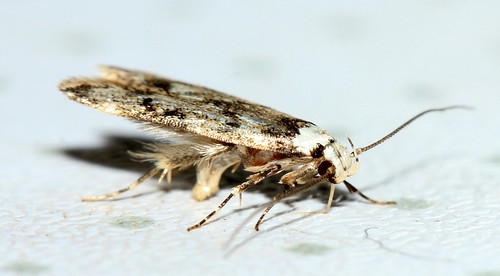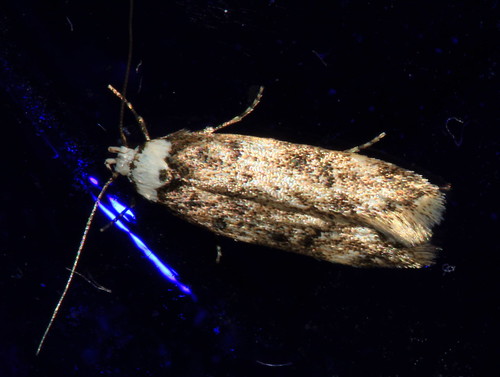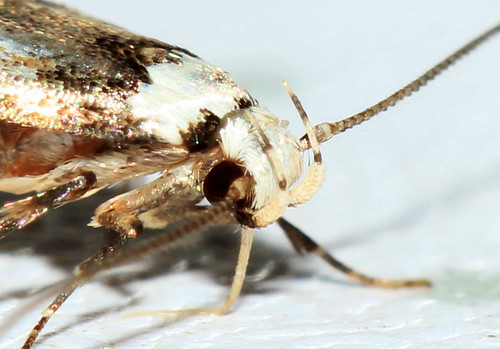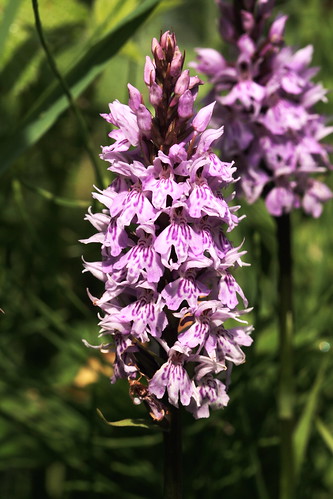The Natural History of Cromwell Bottom LNR All Records or Data Sets (C) 2009 - 2018 All Rights Reserved
Cromwell Bottom

Guide To Cromwell LNR
NEWS - MEETINGS - EVENTS
April 2015 Updated Link on The future of Cromwell Bottom Sign our PETITION (click) to help Cromwell Bottom
WILDLIFE SITING /IDENTIFICATION Send Details or Pictures of finds for identification click to email RECORDS. Please Note ALL lists and Biological Records are Copyright Protected (C) Colin Duke 1998 - 2018 on behalf of the Freshwater Environment Ecology Trust . they should NOT be used or reproduced without permission
Wednesday, 27 May 2015
0648 White-shouldered House-moth Endrosis sarcitrella
This moth is generally found in the House where it is deemed a pest Below is a typical headshot showing its adapted head structure
Wingspan 13-20mm
Wingspan 13-20mm
Monday, 18 May 2015
The Orchid Ecology of Cromwell
I thought I would just add a piece on Orchid reproduction as relevant to Cromwell Bottom in view of a recent misconception by a Wildlife Group Member
Orchids reproduce using two potential processes - vegetative multiplication and sexual reproduction. The degree to which different species of orchid are dependent on each of these processes varies widely.
Follow The Countryside Code
Successful orchid seed germination requires the correct conditions to be present. Important environmental factors for orchid seed germination include moisture, oxygen, light and warmth. Orchid seeds also require the presence of mycorrhizal soil fungi for successful germination and growth. Mycorrhizal soil fungi are often present in healthy unimproved and undisturbed soils.
Orchid seeds carry no food reserves , the nutrients they require to germination and growth are provided by the fungus. The relationship between developing orchids and mycorrhizal fungi is at first parasitic, but as orchids mature their dependence on the fungi decreases. The extent to which the mycorrhizal infection continues after an orchid reaches maturity is species specific. Some orchid species eventually expel the fungus, while others retain it.
Once infected with the mycorrhizal fungus the germinated seed develops in to a tuber. Once the tuber reaches maturity it produces leaves. These leaves feed the developing orchid tuber for several growing seasons until the orchid has stored enough energy to be able to produce flowers. These flowers attract specific insect pollinators to facilitate sexual reproduction and seed production.
Once infected with the mycorrhizal fungus the germinated seed develops in to a tuber. Once the tuber reaches maturity it produces leaves. These leaves feed the developing orchid tuber for several growing seasons until the orchid has stored enough energy to be able to produce flowers. These flowers attract specific insect pollinators to facilitate sexual reproduction and seed production.
The Ecology Of Cromwell Bottom
Orchids generally favour crude disturbed soils and the ruderal conditions on the capped tipped waste site of Tag Loop provides aspects of this . The variuous soil moisture and temperature gradients achieved on the slopes and bleeds into pockets of richer soil can mean that distributions and densities vary. It is likely where crude soils exists with little sub soil bacteria or humic matter these densities result in vegetative multiplication equally there are areas in the reserve where beneration is by seed germination . There is no exact science here and further observations will provide valuable knowledge into establishing sucessful and sustainable orchid populations on the North Loop. As a generalised statment I suspect Orchid clsuters found along the river on bankings are predisposed to seeding due to richer soils and those on the harder crude clay vegetatively.
So before alterring the environment understand it !!
So before alterring the environment understand it !!
Orchids
Common Spotted Orchid
Early Purple Orchid
Early Purple Orchid
Broad leaved Helleborine
- Please stay on the paths provided.
- Please do not pick flowers.
- Please keep your dog on a lead and shut the gates when you go in and out of the reserve.
- Please don’t leave litter.
- Becoming a Trust member or making a donation will also help us to continue to protect the orchids into the future.
Friday, 15 May 2015
Information On Rights of Way (ROW) adjacent to Cromwell Bottom LNR
Research by Glynn
 Please note we are currently ensuring that the FP 042 is adequately signed , maintained and cleared . Its entrance from Elland Rd is to the Right of Cromwell Ho behind the bus stop to Elland and onward through the wood yard please walk this route to keep this use of right
Please note we are currently ensuring that the FP 042 is adequately signed , maintained and cleared . Its entrance from Elland Rd is to the Right of Cromwell Ho behind the bus stop to Elland and onward through the wood yard please walk this route to keep this use of right
The purple line is FP 118 downslope from Southowram to Elland Rd .Cromwell Bottom Nature Reserve can be reached by picking up FP042 from Elland Rd to the RIGHT of Cromwell Ho just adjacent to the onward Elland Bus Stop. Procede to the wood yard and move onward to the gates keeping left to the buildings . This is a use of Right and lawful right of way. FP 042 is also a Bridleway so a horse would not be out of place !!
Procede over the Canal Bridge and onward into the Nature reserve pass the Green shed on the right and you will approach the pedestrial brdge over the River Calder . Strangely Brighouse FP 042 changes its status from Bridleway half way accross the bridge where it becomes Elland 014 . Technically neither of these routes are suited for cycling as they are defined as footpaths not carriageways
Brighouse 042 is a Bridleway
Elland 014 is a Footpath
"As we understand it you need to get of thee horse alf way cross bridge as becomes footpath for use with thee legs "
From the map you can see the route of Brighouse Public ROW 042 which is a Bridleway merging with Elland 114 ROW Footpath
a “footpath” over which the right of way is on foot only;
c “carriageway” over which there is a right of way on foot, on horseback, and in or on a vehicle.
Subscribe to:
Posts
(
Atom
)












